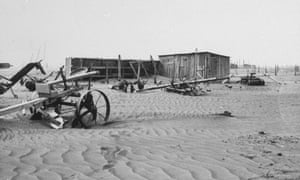Issued on: 27/05/2020 - 19:16Modified: 27/05/2020 - 19:14

With their crew cuts, cool demeanor, short and precise sentences, Robert Behnken and Douglas Hurley have all the traditional hallmarks of the men of NASA
Bill INGALLS NASA/AFP/File

Kennedy Space Center (United States) (AFP)
Robert Behnken and Douglas Hurley, the astronauts set to launch into orbit on a SpaceX rocket Wednesday, are both former military pilots, both recruited by NASA in 2000, and both married to fellow astronauts.
With their crew cuts, cool demeanor, short and precise sentences, they have all the traditional hallmarks of the men of NASA.
Smiling, reasonable, competent, reliable: in other words "The Right Stuff" of the early era of spaceflight.
They met in 2000 when they began their training at the space agency, and have been best friends ever since, said Hurley, 53.
Both of them attended military test pilot school, a well worn path to the astronaut corps.
Behnken, 49, holds a doctorate in mechanical engineering from the California Institute of Technology.
He signed up for the military during his studies and attended the elite Air Force Test Pilot School at Edwards Air Force Base in California.
A colonel, he's flown more than 25 different aircraft, including the F-22 fighter.
Hurley was also a colonel and before joining NASA was a fighter pilot and test pilot in the Marine Corps, a specialist for the F/A‐18.
Between 2008 and 2011, they both flew two missions, separately, on the Space Shuttle.
In 2015, NASA assigned them their next mission: the first crewed flight of the Crew Dragon, built by SpaceX and initially planned for 2017.
- Dream mission -
"If you gave us one thing that we could have put on our list of dream jobs that we would have gotten to have some day, it would have been to be aboard a new spacecraft and conduct a test mission," Behnken told reporters when he arrived at the Kennedy Space Center from Houston last week.
It was through the astronaut corps that each of them met their wives, who have also space missions to their credit.
Behnken married Megan McArthur, and they have a six-year-old boy, Theodore.
Doug married Karen Nyberg, and they too have a son, Jack, aged 10.
The bond of friendship that unites the two men is an obvious asset for such a risky mission, where they each might have to take control of the spacecraft that is set to auto pilot by default.
Hurley is the more meticulous, even obsessive, of the two, said Behnken.
"If we have to get useless information, Doug is always the repository for that," joked Behnken in a video released by NASA.
Hurley himself admitted to being an expert in "obscure procedures."
As for Behnken, Hurley said his friend thinks of everything ahead of time. "He's already got it all figured out."
But he's no good at bluffing and "doesn't have a good poker face," added Hurley.
On Monday, the head of NASA texted the pair to ask one last time: are you sure you want to go ahead?
"They both came back and they said, 'we're go for launch,'" said Jim Bridenstine. "So they're ready to go."
It's a moment they've been training for the past five years.
© 2020 AFP
Kennedy Space Center (United States) (AFP)
Robert Behnken and Douglas Hurley, the astronauts set to launch into orbit on a SpaceX rocket Wednesday, are both former military pilots, both recruited by NASA in 2000, and both married to fellow astronauts.
With their crew cuts, cool demeanor, short and precise sentences, they have all the traditional hallmarks of the men of NASA.
Smiling, reasonable, competent, reliable: in other words "The Right Stuff" of the early era of spaceflight.
They met in 2000 when they began their training at the space agency, and have been best friends ever since, said Hurley, 53.
Both of them attended military test pilot school, a well worn path to the astronaut corps.
Behnken, 49, holds a doctorate in mechanical engineering from the California Institute of Technology.
He signed up for the military during his studies and attended the elite Air Force Test Pilot School at Edwards Air Force Base in California.
A colonel, he's flown more than 25 different aircraft, including the F-22 fighter.
Hurley was also a colonel and before joining NASA was a fighter pilot and test pilot in the Marine Corps, a specialist for the F/A‐18.
Between 2008 and 2011, they both flew two missions, separately, on the Space Shuttle.
In 2015, NASA assigned them their next mission: the first crewed flight of the Crew Dragon, built by SpaceX and initially planned for 2017.
- Dream mission -
"If you gave us one thing that we could have put on our list of dream jobs that we would have gotten to have some day, it would have been to be aboard a new spacecraft and conduct a test mission," Behnken told reporters when he arrived at the Kennedy Space Center from Houston last week.
It was through the astronaut corps that each of them met their wives, who have also space missions to their credit.
Behnken married Megan McArthur, and they have a six-year-old boy, Theodore.
Doug married Karen Nyberg, and they too have a son, Jack, aged 10.
The bond of friendship that unites the two men is an obvious asset for such a risky mission, where they each might have to take control of the spacecraft that is set to auto pilot by default.
Hurley is the more meticulous, even obsessive, of the two, said Behnken.
"If we have to get useless information, Doug is always the repository for that," joked Behnken in a video released by NASA.
Hurley himself admitted to being an expert in "obscure procedures."
As for Behnken, Hurley said his friend thinks of everything ahead of time. "He's already got it all figured out."
But he's no good at bluffing and "doesn't have a good poker face," added Hurley.
On Monday, the head of NASA texted the pair to ask one last time: are you sure you want to go ahead?
"They both came back and they said, 'we're go for launch,'" said Jim Bridenstine. "So they're ready to go."
It's a moment they've been training for the past five years.
© 2020 AFP
SpaceX readies for blast-off with NASA astronauts aboard

AFP / Gregg NewtonA SpaceX Falcon 9 rocket with the Crew Dragon spacecraft sits atop launch complex 39A at the Kennedy Space Center in Florida on May 25, 2020
Gray skies loomed over Florida's Atlantic coast Tuesday, just one day before two astronauts were set to blast off aboard a SpaceX capsule on the most dangerous and prestigious mission NASA has ever entrusted to a private company.
There was a 60 percent chance for favorable weather for Wednesday's flight, according to Tuesday's latest Cape Canaveral forecast.
US astronauts Bob Behnken and Doug Hurley have been in strict quarantine for two weeks ahead of their trip on the brand-new Crew Dragon capsule, which will be propelled by a Falcon 9 rocket.
Both the capsule and the rocket were manufactured by SpaceX, the start-up founded in 2002 by the then-thirty-something Elon Musk, a brilliant and brash Mars-obsessive who made his fortune with PayPal and also created the famous Tesla electric cars.
The Crew Dragon is to carry the astronauts to the International Space Station (ISS), which orbits the Earth about 250 miles (400 kilometers) above sea-level at about 17,000 miles per hour.
The success of this mission is a point of national pride for the United States, which has depended on Russian rockets to reach space since its last crewed flight in 2011.
Neither the new coronavirus pandemic nor confinement measures to stop its spread were able to derail the launch, and President Donald Trump will become only the third US leader to watch the take-off of a human space flight in person, after Richard Nixon and Bill Clinton.

Gray skies loomed over Florida's Atlantic coast Tuesday, just one day before two astronauts were set to blast off aboard a SpaceX capsule on the most dangerous and prestigious mission NASA has ever entrusted to a private company.
There was a 60 percent chance for favorable weather for Wednesday's flight, according to Tuesday's latest Cape Canaveral forecast.
US astronauts Bob Behnken and Doug Hurley have been in strict quarantine for two weeks ahead of their trip on the brand-new Crew Dragon capsule, which will be propelled by a Falcon 9 rocket.
Both the capsule and the rocket were manufactured by SpaceX, the start-up founded in 2002 by the then-thirty-something Elon Musk, a brilliant and brash Mars-obsessive who made his fortune with PayPal and also created the famous Tesla electric cars.
The Crew Dragon is to carry the astronauts to the International Space Station (ISS), which orbits the Earth about 250 miles (400 kilometers) above sea-level at about 17,000 miles per hour.
The success of this mission is a point of national pride for the United States, which has depended on Russian rockets to reach space since its last crewed flight in 2011.
Neither the new coronavirus pandemic nor confinement measures to stop its spread were able to derail the launch, and President Donald Trump will become only the third US leader to watch the take-off of a human space flight in person, after Richard Nixon and Bill Clinton.

NASA/AFP / Bill INGALLS
Douglas Hurley and Robert Behnken are seen in their spacesuits on May 23, 2020
"This is a unique moment where all of America can take a moment and look at our country do something stunning again," NASA administrator Jim Bridenstine said.
In a nod to an earlier era of US space flight, Bridenstine resurrected a vintage 1970s NASA logo nicknamed "the worm," whose distinctive red font will adorn the rocket on Wednesday.
SpaceX made history in 2012 when it became the first private entity to dock a cargo capsule to the ISS. Two years later, NASA commissioned the company to modify the Dragon to carry passengers.
That was already Musk's original dream for the capsule anyway, according to SpaceX vice president Hans Koenigsmann.
"Cargo Dragon, we put a window on it so that people wouldn't forget about it," he said of the original ship design.
"We (were) founded with the idea of human spaceflight."
- Delays -
The program, into which NASA has invested more than $3 billion, is three years behind schedule.

"This is a unique moment where all of America can take a moment and look at our country do something stunning again," NASA administrator Jim Bridenstine said.
In a nod to an earlier era of US space flight, Bridenstine resurrected a vintage 1970s NASA logo nicknamed "the worm," whose distinctive red font will adorn the rocket on Wednesday.
SpaceX made history in 2012 when it became the first private entity to dock a cargo capsule to the ISS. Two years later, NASA commissioned the company to modify the Dragon to carry passengers.
That was already Musk's original dream for the capsule anyway, according to SpaceX vice president Hans Koenigsmann.
"Cargo Dragon, we put a window on it so that people wouldn't forget about it," he said of the original ship design.
"We (were) founded with the idea of human spaceflight."
- Delays -
The program, into which NASA has invested more than $3 billion, is three years behind schedule.

AFP / Gregg NewtonThe chances of there being favorable weather for the launch was put at 60 percent, according to NASA
And a NASA-commissioned Boeing spacecraftcalled the Starliner, is even further delayed.
After a successful uncrewed test flight last year, a Crew Dragon capsule later exploded during a ground engine test. There were also issues developing the capsule's large parachutes.
But after thousands of checks and re-checks, NASA is finally ready to go -- or as ready as they can be to strap two people on top of a 500-ton rocket filled with combustible fuel.

And a NASA-commissioned Boeing spacecraftcalled the Starliner, is even further delayed.
After a successful uncrewed test flight last year, a Crew Dragon capsule later exploded during a ground engine test. There were also issues developing the capsule's large parachutes.
But after thousands of checks and re-checks, NASA is finally ready to go -- or as ready as they can be to strap two people on top of a 500-ton rocket filled with combustible fuel.

AFP/File / Philip PachecoElon Musk founded SpaceX in 2002
"We never feel comfortable, because that's when you're not searching," said Kathy Lueders, head of NASA's commercial crew program.
"We're going to stay hungry until Bob and Doug come home," she said.
- 'Above geopolitics' -
Now, the weather is the last unpredictable variable.
But "the trend is in the right direction," Bridenstine said, despite the rain that forced his Tuesday press conference indoors and away from the big countdown clock outside.
The option to delay remains available until 45 minutes before the flight's scheduled departure at 4:33 pm (2033 GMT).
The next potential windows for blast-off are Saturday and Sunday.
After they reach orbit, it will take Hurley and Behnken around 19 hours to reach the ISS, where Bridenstine says they could stay until early August.

"We never feel comfortable, because that's when you're not searching," said Kathy Lueders, head of NASA's commercial crew program.
"We're going to stay hungry until Bob and Doug come home," she said.
- 'Above geopolitics' -
Now, the weather is the last unpredictable variable.
But "the trend is in the right direction," Bridenstine said, despite the rain that forced his Tuesday press conference indoors and away from the big countdown clock outside.
The option to delay remains available until 45 minutes before the flight's scheduled departure at 4:33 pm (2033 GMT).
The next potential windows for blast-off are Saturday and Sunday.
After they reach orbit, it will take Hurley and Behnken around 19 hours to reach the ISS, where Bridenstine says they could stay until early August.

AFP / Gregg NewtonThe Falcon 9 rocket is seen May 25, 2020 ahead of its launch from the Kennedy Space Center in Florida
Their return will resemble the Apollo re-entries: a water landing in the Atlantic Ocean, off the coast of Florida.
If all goes well, the Crew Dragon could then begin regular flights from the United States to the ISS.
At the end of August, three other Americans and a Japanese astronaut are scheduled to fly on the ship, and Europe, Canada and Russia have been invited to participate in subsequent missions.
The Russians, with whom the US built the ISS, have agreed to continue their space partnership, according to Bridenstine, though they have not officially signed onto the new program.
"It's really above terrestrial geopolitics," he said. "Literally -- above terrestrial geopolitics."
Their return will resemble the Apollo re-entries: a water landing in the Atlantic Ocean, off the coast of Florida.
If all goes well, the Crew Dragon could then begin regular flights from the United States to the ISS.
At the end of August, three other Americans and a Japanese astronaut are scheduled to fly on the ship, and Europe, Canada and Russia have been invited to participate in subsequent missions.
The Russians, with whom the US built the ISS, have agreed to continue their space partnership, according to Bridenstine, though they have not officially signed onto the new program.
"It's really above terrestrial geopolitics," he said. "Literally -- above terrestrial geopolitics."
26MAY2020











